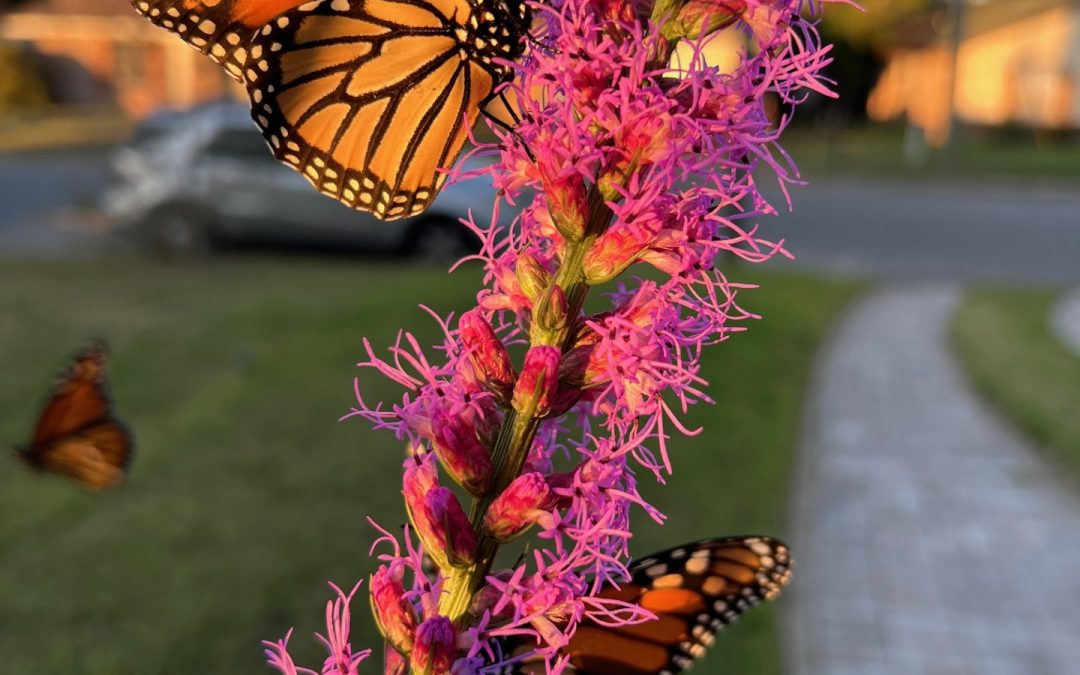
by Carrie Stevenson | Nov 6, 2025

A spectacular array of blazing star in bloom. Photo credit: Troy Springer, Florida Wildflower Foundation
Walking through a northwest Florida wildflower prairie in autumn, the star of the show is Liatris. Known as dense gayfeather or blazing star, this tall (up to 7’!) stunner of a plant is covered up with clusters of small purple flowers. The flowers are are composed of tiny, frilly five-petaled florets. Each cluster may have groups of up to 18 flowers at a time, crowding the stalk with color.
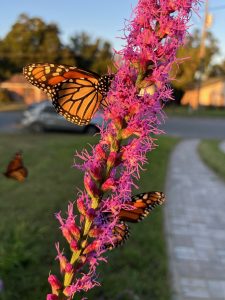
Migrating monarchs feed on blazing star in late fall. Photo credit: Whitney Scheffel
Before blooming, the spiky grasslike structure grows upright and produces a series of dozens of green leaflets, similar in form to rosemary.
While delicate in appearance, the blazing star is a hardy plant adapted to a wide range of habitats. Some varieties can grow in the pure sand of beach dunes and scrub, while Liatris spicata thrives in the soggy wet soils of bogs and pine flatwoods. The species is known for attracting bees, butterflies, and hummingbirds, so it makes a great addition to a pollinator garden. The flowers perform best in full sun.

Side-by-side, the bottlebrush-like blazing star plant before and after blooming. Photo credit: Carrie Stevenson, UF IFAS Extension
Blazing star is particularly impressive in a large group, so you can plant dozens together (by seed or container) for a beautiful effect. After blooming deep purple this time of year, they’ll turn a goldish bronze that adds to the interesting fall color of a garden. Liatris will also re-seed every year after dying back in the winter.
There are many plants native to the United States known commonly as colic root, including blazing star. This nickname arose from its traditional medicinal use treating stomach cramps. Additional uses of a tea made from the plant were used for everything from sore throats and kidney issues, while an incense made from dried roots was burned for sinus relief.
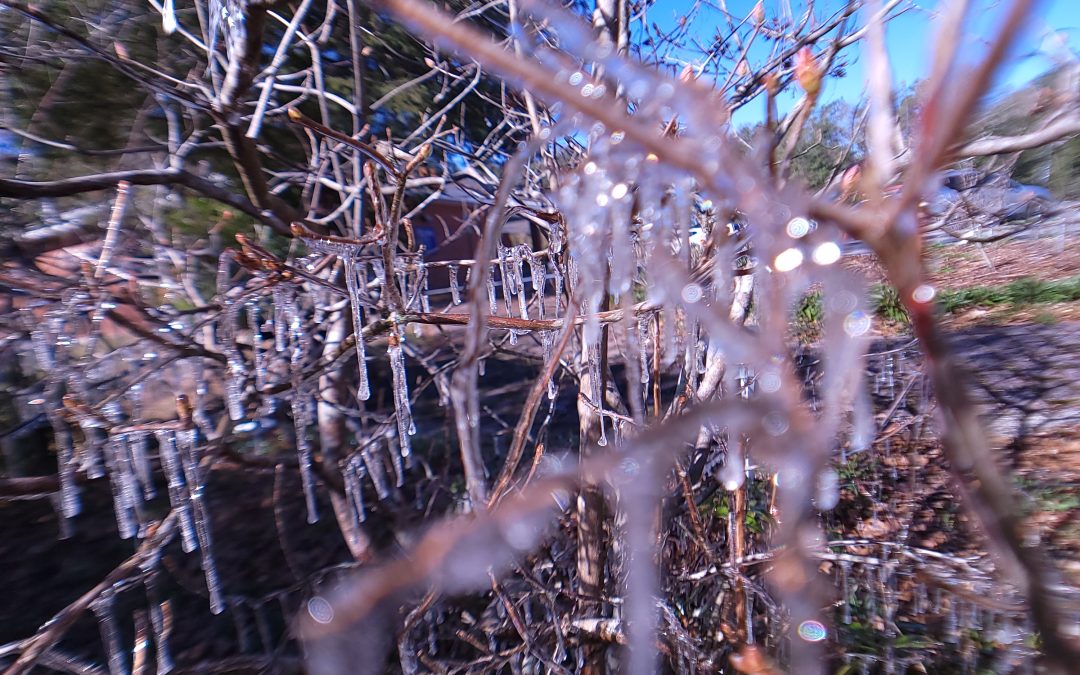
by Joshua Criss | Nov 6, 2025
Another North Florida winter is here! With that comes a new plants from leafy greens to snapdragons. It also means the inevitable freeze is on the way. It is prudent for all gardeners to review what needs to be done to protect your non-freeze hardy plants.
Hardiness Zones
Before we get into what actions you may need to take, let’s examine plant hardiness zones. These are geographic areas created by the US Department of Agriculture defined by their average extreme minimal temperature. In the Panhandle these are zones 8b through 9b. In winter we will likely see low temps between 15 – 30 degrees depending on your zone. Sourcing plants appropriate for your zone can mitigate quite a bit of cold damage in your landscape. If you like plants susceptible to the cold, you can interplant them to add a little protection.
Microclimates
Find and utilize your yard’s microclimates. Areas under larger trees are likely to remain warmer in the winter. This is also true behind a windbreak, or near a structure with high sun exposure. Look around your yard and plant any cold sensitive plants in these areas.
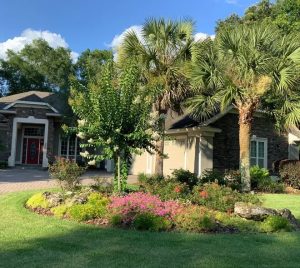
This area is likely to have multiple microclimates. UF/IFAS Photo
Full Season Plant Care
Cold protection begins with warm season plant care. Pay close attention to the irrigation and fertilization needs of your landscape plants. Apply these properly to ensure stress free plants moving into the colder months as these will perform better as the mercury begins to drop.
Imminent Freeze Actions
Ok, now that everything is planned, we know our microclimates, and we’ve cared for our landscape through the year let’s see what can be done when a freeze is imminent.
Water the morning prior to a freeze event. Wet soils retain warmth better than dry. That heat will be re-radiated through the freezing night keeping your plant slightly warmer. Adding some mulch will aid this effort. Watering again the next day will break any ice formed in the soil. Keep in mind that prolonged saturation could be detrimental to root systems. Scout your plants regularly after using this strategy to ensure plant health.
Protect potted plants by bringing them indoors. Those that are too big to move should be padded with extra mulch, and clustered together when possible. Make sure to move them back in place when the warmth returns.
For those trees with graft points (i.e. Citrus), tree wraps may be used as protection. If you don’t have these, pile mulch around the base of the tree to insulate the graft. The idea here being that even if the branches above the graft succumb to the cold, the tree can rebranch above the graft thus keeping the desired fruit of that tree.
Finally, cover your plants. Covers are more useful for frost than freezing temps but are better than direct exposure to cold air. Keep these off the plant’s foliage while ensuring they reach all the way to the ground. Think ghosts over lollipops. Taking them to the ground will capture any heat radiated out of the soil overnight. The addition of lights underneath the cover can help keep that area a little warmer. Be very cautious when doing this as too much heat under the cover could be dangerous.
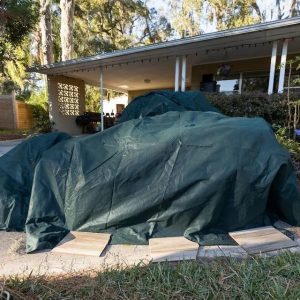
Plants covered above the foliage, and to the ground. UF/IFAS Photo
You may see some nurseries apply irrigation via sprinklers through the freeze as protection. While this method does work, it requires some specialty equipment. Additionally, you’ll need to apply the water prior to the freeze setting in and continue until the temps return. It not a practical solution for homeowners.
Once the cold passes, keep an eye on your plants. Wait until you see new growth before pruning damaged plant tissue. If in doubt you can slightly scrape the bark. If the cambium beneath the scrape is green, it is still alive.
For more information on cold protection or any other horticultural topic contact you local UF/IFAS Extension office.
by Ben Hoffner | Nov 5, 2025
When making plans for a fall or spring garden it is important to consider which methods of planting and raising your crops will work best for you. Traditional ground plots can be very effective but like with anything there can be negatives. Issues with space and soil fertility will be your biggest challenges with ground plots. Raised Beds are a very popular choice for several reasons like being aesthetically pleasing, mitigation of poor or no soil, decreases runoff/erosion, positive use of space, and maintenance.
Site Selection – Before creating your raised bed there should be a couple of key factors that are considered. Sunlight is the most important factor. Areas where the raised beds are constructed must have full sun for a minimum of 5 to 6 hours per day for best results. It is ideal to have morning sun do it less intense heat in the morning and dries due off the plant. Staying clear of structures, large trees, tree lines will help to have ample sunlight. Access to a water source close by is imperative for a successful raised bed. Make sure it is placed on well drained level ground away from tree roots that could compete with your crops.
Construction – The most “traditional” raised bed structure are made with wood. Consider pressure treated vs. non-treated wood. Pressure treated wood post 2004 is unlikely to contaminate food crops and will have a longer shelf life. Non-pressure treated will be a less up-front cost but will end up costing more overtime due to having to replace the boards earlier and more often. Screws and nails are appropriate methods to secure the corner but be sure to dispose of them correctly. Concrete corner blocks found at stores like Lowes or Home Depot have become a popular mothed to secure the corners. A 4’x8’ bed is the most popular size due to easy maintenance and construction. To construct this sized bed all you will need is three 2”x6”x8’ boards and four concrete corner blocks. After the outline of the bed has been created, you will need to create a base layer to kill the grass below, so it does not grow up through the soil. You can use materials like cardboard or mulch to accomplish this. The raised beds should be filled with either a mix made for raised beds or a 50-50 mix of compost/organic matter and topsoil. 1 cubic yard of material will fill a 4’x8’ raised bed.
Raised beds can be an effective and fun way to garden at home. Consider all factors discussed to make sure your raised beds are successful. For more information on raised beds contact your local UF/IFAS Extension Office. 
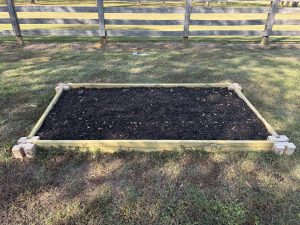
4’x8′ Raised bed – Photo taken by Ben Hoffner – Jefferson

by Julie McConnell | Oct 30, 2025
 Do you enjoy cutting flowers from your garden to enjoy indoors?
Do you enjoy cutting flowers from your garden to enjoy indoors?
Have you ever considered turning that passion into a small business opportunity or earning a little cash to help to support your flower habit?
If you answered yes to these questions, then you should plan to attend the “Cut Flower 101 Growing for Fun & Profit” workshop on November 14, 2025, in Live Oak!
Flower farms are popping up across the state on small parcels of land, including urban settings. Social media posts of flower growers look like it’s all blooms and bucks, but there are a lot of factors that need to be weighed before jumping into any agricultural endeavor.
Learning what, when, and how to grow specific flowers are key factors to developing a successful grow plan. Options to consider include bed preparation for raised beds, crates, or in-ground production. Should you direct seed or grow transplants? When do you start the seeds and when do you put the seedlings outside? How to prepare for adverse weather conditions? Which types of irrigation and fertilization methods should you use? And of course, how much money is needed to invest for the best returns while minimizing risk?
All those choices may seem overwhelming, but you don’t have to figure it out on your own! Spend a day at the UF/IFAS Small Farms Academy at the North Florida Research and Education Center Suwanee Valley in Live Oak, Florida for an introduction to small scale cut-flower production.
Sidenote – Even if you have no inclination of starting a business, but just want to grow cut flowers you can enjoy you are welcome to attend!
Pre-registration is required by purchasing a ticket at https://www.eventbrite.com/e/cut-flower-101-tickets-1738264990379
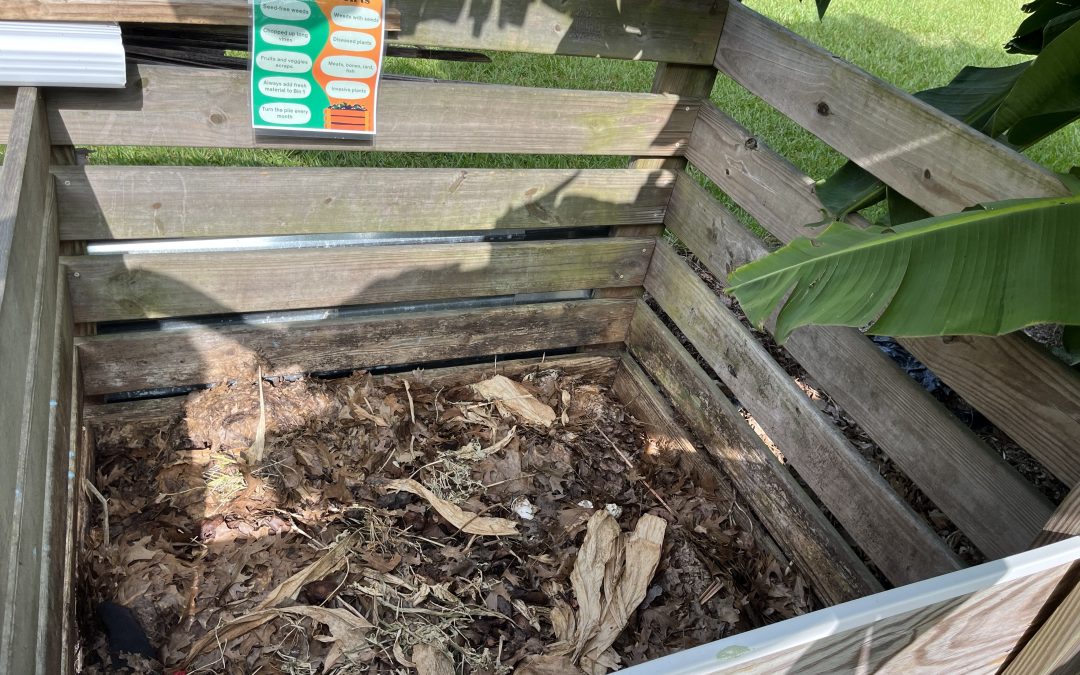
by Molly Jameson | Oct 30, 2025
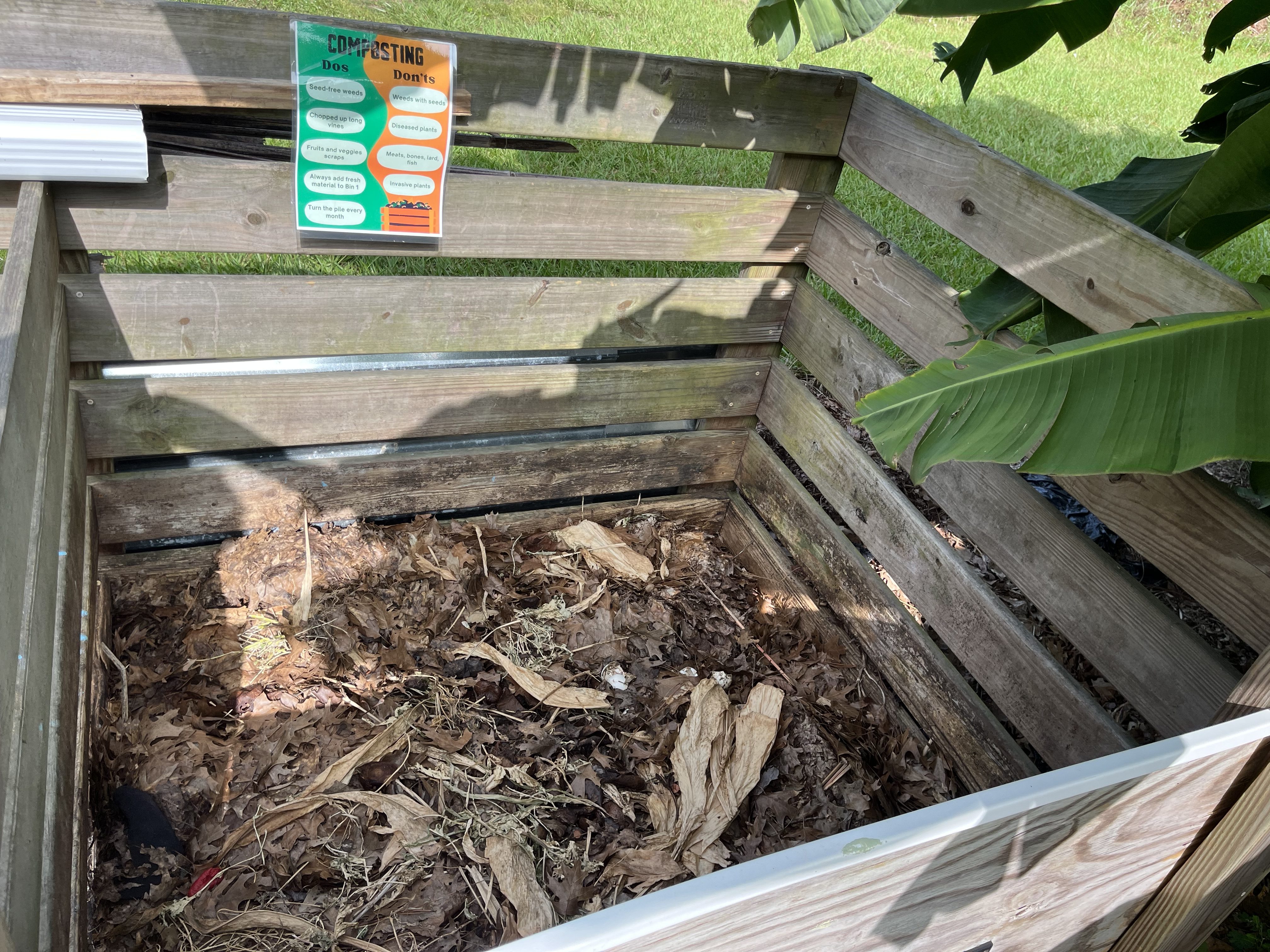
A simple wooden bin provides airflow and space for layering “browns” and “greens” to create balanced compost at home. Photo by Molly Jameson.
The Dirt on Compost: Hot and Worm Composting at Home
Every week, many of us dump spoiled food or leftovers into the trash and haul yard waste to the curb, not realizing that all of that organic material could be turned into something incredibly useful. Composting is the answer. It’s a simple, natural process that transforms food scraps and yard debris into a rich soil amendment that feeds your plants and improves soil health.
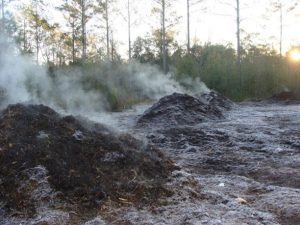
Microbial activity generates heat as organic matter breaks down, causing visible steam to rise from active thermophilic compost piles on cool mornings. Photo by Turkey Hill Farm.
There are two main ways to compost at home: thermophilic (hot) composting and vermicomposting (composting with worms).
Thermophilic composting is the classic backyard method that relies on heat-loving microbes to break down organic material. With the right mix of “browns” (carbon-rich materials like dried leaves, cardboard, and straw) and “greens” (nitrogen-rich materials like vegetable scraps, coffee grounds, and grass clippings), the pile heats up to between 130–160°F. This high heat speeds up decomposition and kills weed seeds and harmful pathogens. Turn the pile occasionally and keep it moist, and in a few months, you’ll have dark, earthy compost ready to mix into your garden beds.
Hot Composting Fun Facts
- Food scraps and yard waste make up nearly 30% of what we throw away, most of which could be composted instead.
- Microbes in a hot compost pile can double their population every 20–30 minutes under the right conditions.
- A compost pile needs at least one cubic yard (3x3x3 feet) of material to build enough mass to heat up properly.
- Steam rising from a compost pile on a chilly morning isn’t smoke – it’s water vapor from microbial activity.
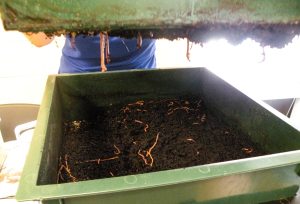
Red wiggler earthworms transform food scraps into nutrient-rich worm castings. Photo by Leon County.
Vermicomposting is a little different – and a bit squirmier. This method uses red wiggler earthworms (Eisenia fetida) to process kitchen scraps into a fine, nutrient-rich material called worm castings. Earthworm bins can be kept indoors or outside in a shaded area, making them a great option for those with limited space. It’s clean, odor-free when managed properly, and a surprisingly fun way to recycle your food waste.
Worm Composting Fun Facts
- Red wigglers can eat up to half their body weight in food scraps each day.
- Worms breathe through their skin and need moist bedding to survive and stay active.
- Worm castings contain five times more nitrogen and seven times more phosphorus than average topsoil.
- Worm castings contain beneficial microbes that help suppress certain plant diseases in soil.

Finished vermicompost is dark, crumbly, and nutrient-rich – the result of red wigglers breaking down organic waste. Photo by John Edwards.
Both methods keep organic material out of the landfill, reduce methane emissions, and build healthier soil – something every gardener can appreciate.
If you’d like to learn even more about composting and hear additional fun facts about how nature recycles, join UF/IFAS Extension Agents Mark Tancig and Molly Jameson for The Dirt on Compost: Hot & Worm Composting at Home on Wednesday, November 12, from 6:00 to 8:00 p.m. at the Leon County Extension Office (615 East Paul Russell Road).
Register on Eventbrite: https://UFIFASLeonCompostingFall2025.eventbrite.com
This free workshop will explore the science behind composting and provide practical tips for both hot composting and worm composting systems.















